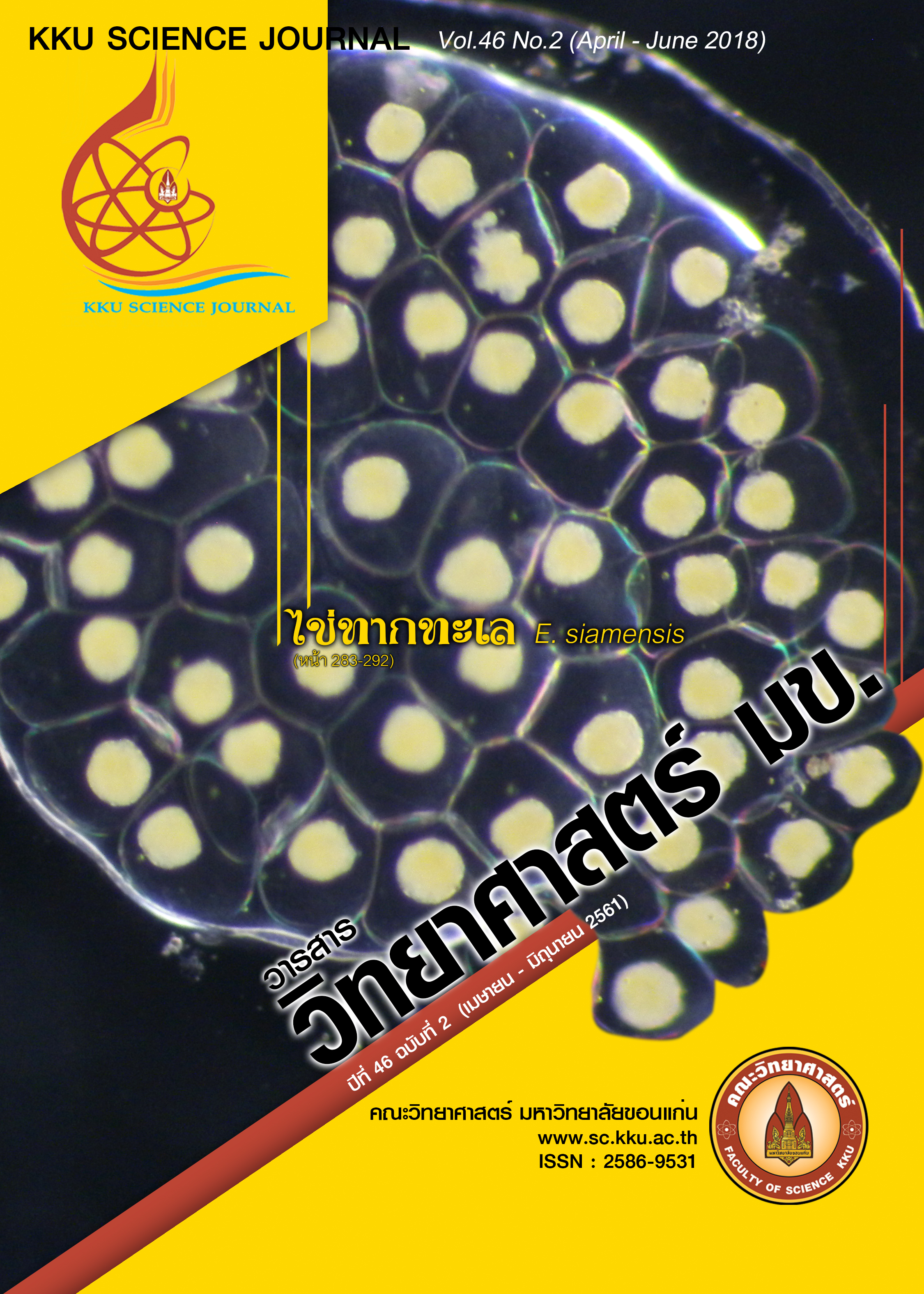An Application of Multivariate and Geometric Morphometrics on the Study of Functional Morphology of three Species in the Genus Channa Scopoli, 1777 (Channidae: Perciformes)
Main Article Content
Abstract
The study of functional morphology and the species identification were carried out in three fish species in the genus Channa Scopoli, 1777 namely Channa striata (Bloach, 1793), Channa gachua (Hamilton, 1822) and Channa lucius (Cuvier, 1791). Two morphometric methods including truss network system (TNS) and thin-plate spline analysis (TPS) were employed. The results showed that both techniques could demonstrate the different characters among those three species appearing in head, body and tail. The variations on head part related in snout, maxillary, and the length and depth of head whereas the body part involved with body depth and the length of fin-lacked abdomen and anal fin base. The tail part showed variations within the length and depth of caudal peduncle. These inter-specific variations correlated with their feeding behavior, swimming maneuverability, and habitat preferences. The discrimination of morphological differences by using TPS method was more effective than that of TNS method which the global accuracy rates of 100% and 98.24%, respectively. This study has been obviously shown that the morphometric methods can be used for the analysis of morphological differences in the species levels and for the taxonomic classification of Channid fish.
Article Details

This work is licensed under a Creative Commons Attribution-NonCommercial-NoDerivatives 4.0 International License.


